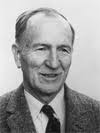Hughes, Everett C.

Bio: (1897-1983) American sociologist. Everett Hughes received his doctorate in sociology from the University of Chicago and taught at the universities of Montreal (1927-1938) and Chicago (1938-1961). At a time when the Chicago School was divided into two main directions - the ecological macro-sociological direction and the interpretive micro-sociological direction - Hughes' theoretical approach was one of the few that sought to unite both approaches. Hughes's approach, which he called "interpretive institutional ecology" combines the human ecology of the Park with the structural functionalism of Radcliffe-Brown and Durkheim, the formalism of Simmel, and the symbolic interactionism of William Thomas and Cooley. In addition to combining the theoretical approaches of both currents of the Chicago School, Hughes also uses empirical methods of research of both directions: participatory observation, and statistical and archival data.
The interpretive institutional ecology is a theoretical approach that lies between the micro-sociological and macro-sociological approaches, that is, it is the meso-sociological approach. The theoretical focus is on one institution or a small group of institutions (an “institutional setting”), therefore, on the same institutional environment. Within one institution (hospitals, schools, etc.), people enter into complex interrelationships where their social roles, at the same time, can be overlapping, conflicting, or complementary. On the other hand, people try to achieve many long-term goals (careers, as Hughes, calls them), both inside and outside institutions. It is this focus of people on different careers that they pursue, that is central to the analytical logic of interpretive institutional ecology.
The second level of analysis uses ecology and functional analysis to explore the “natural history” of institutions. The natural history of institutions refers to the processes of creation, shaping, and changing institutions, in order to survive within complex and constantly changing natural and social environments. Hughes uses Durkheim's idea of division of labor and Radcliffe-Brown's functional analysis to explore the ecological and functional adaptations of institutions throughout their natural histories. Institutions are created to serve social and individual needs. Institutions survive because their members adopt strategies that help them achieve their careers, but at the same time, these strategies also serve to increase the ability of institutions to adapt to their environmental environment. Simultaneously with the adaptation to the environment, institutions specialize in order to perform specific functions within society.
The micro-sociological aspect of Hughes' theory studies how intelligent and reflective actors (individual selves) adapt to external circumstances. They do this by constantly actively redefining situations, meanings, roles, and careers. The sum of these individual adjustments leads to institutional change. Hughes' microsociology was influenced by Cooley's view of the institutionalized and social nature of the self, Thomas' concept of " definition of the situation " and Simmel's understanding of social interaction as a process. Hughes sees actors as free to create their own social reality, but they are limited by external influences that are either unknown to them or they are no table to change them. On the other hand, not all people have the same power to define the situation, because there are individual differences in power and knowledge. A third factor that restricts people's freedom to define their situations is the limited number of culturally available norms and roles.
Fields of research
Actors Ecology Free Will Institution and Organization Power, Political Race Role, Social Status WorkTheoretical approaches
Interpretative Institutional EcologyMain works
French Canada in Transition (1943);
Where Peoples Meet: Racial and Ethnic Frontiers (1952);
Men and Their Work (1958);
Field Work: An Introduction to the Social Sciences (1960);
Boys in White: Student Culture in Medical School (1961);
The Sociological Eye: Selected Papers (1971);
The Chicago Real Estate Board: The Growth of an Institution (1979);
On Work, Race, and the Sociological Imagination (1994).

